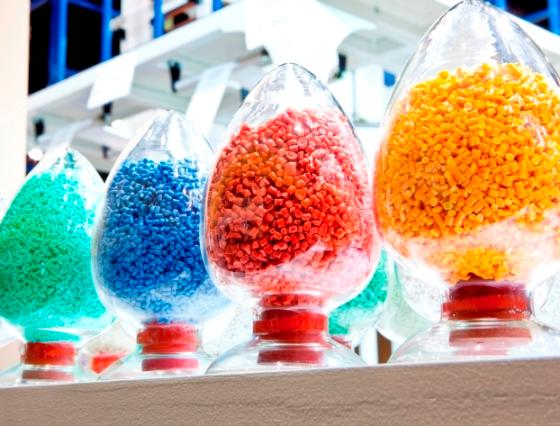Additive Masterbatches for Functional Performance

Additive Masterbatches
SUGOI Polymers offers highly concentrated and efficient functional additive masterbatches to complement our broad range of color products and specialty compounds.
These masterbatches are modern formulations which maximize additive usage, providing plastics processors optimal functionality at minimum cost of usage, and are available world-wide.
Need a chemical resistant plastic? Or a light diffusing plastic? An anti-static plastic? How about a static dissipative plastic? Our plastic additives can be incorporated into a multi-functional formulation to help you complete all of your plastic and packaging needs.
Team up with SUGOI Polymers and our plastic additives for enhanced performance, improved processing, or a modification to your product’s overall aesthetic appeal.
Meeting Goals Together
In order to meet heavy demands, we have a large selection of plastic additives available to ensure a custom formula for color concentrates, masterbatches, or liquid blends. Whether your goal is an additive to help resist UV light, create a frosted look, reduce friction, or simply look whiter, we have the tools and technology to give your product the leading edge. And do not forget, if you do not see the additive you need listed here, simply contact your rep to learn about what we have currently in development.
Types of Plastic Additives:
- Antiblock — This reduces the friction on the surface and impart lubricity for ease of use.
- Anti-Fogging – Antifogging additives minimizes the surface tension so the water forms a continuous transparent film rather than droplets.
- Antioxidant — This additive help preserve appearance and physical properties of plastics. In packaging applications, it helps prevent oxidative degradation of the polymer, which helps to create a more chemical resistant plastic.
- Anti-Static — This additive helps prevent static charges that can build up on the surface of plastics products which attract dust and dirt particles, cause clinging and sticking, as well as even be a fire or explosion hazard. Adding it to your product(s) creates antistatic plastic to fit all your needs.
- Clarifying Agents for PP — PP does not have clarity or transparency of amorphous polymers, so the crystal structure of the resin needs to be changed if a very clear and transparent product is desired.
- Fillers — Fillers are used to improve a product’s stiffness, hardness and shrinkage stability.
- Impact Modifiers – Impact modifiers increase a product’s flexibility and prevent the plastic from splitting into many pieces.
- Laser Marking/Welding – Permanent markings can be achieved on plastic parts.
- Matting Agents — This additive modifies the molded part surface to create a matte or frosted look in a part. With the addition of matting agents, the surface gloss can be reduced, resulting in a more light diffusing plastic.
- Mold Release — These additives migrate to the surface of the part and increase the lubricity, which helps facilitate ease of release of the parts from the mold.
- Mucleating Agent — Added as a processing aid to decrease a product’s cycle time, nucleating agents can also help to enhance stiffness and clarity.
- Optical Brightner — This is used in white or colored plastics to make them look brighter. It is also used as markers in plastic parts which can be detected under UV light.
- Scent — This is used to reflect the fragrance or aroma of the product in plastic packaging. It can also be used to mask an unpleasant odor of some plastics.
- Slip— Slip additives blooms to the surface during the process and reduce the coefficient of friction, imparting lubricity.
- Sterates — Stearate additives help reduce the friction between the polymer and a filler, metal or another polymer.
- Toner — Sometimes used with an optical brighter, but usually has a bluish purple tent to overcome the yellow appearance of the resin. It will help the product look clearer.
- UV Stablizers — UV light stabilizers prevent yellowing and the formation of harmful free radicals that can degrade and decompose polymer chain. It also helps delay the chalking effect.
